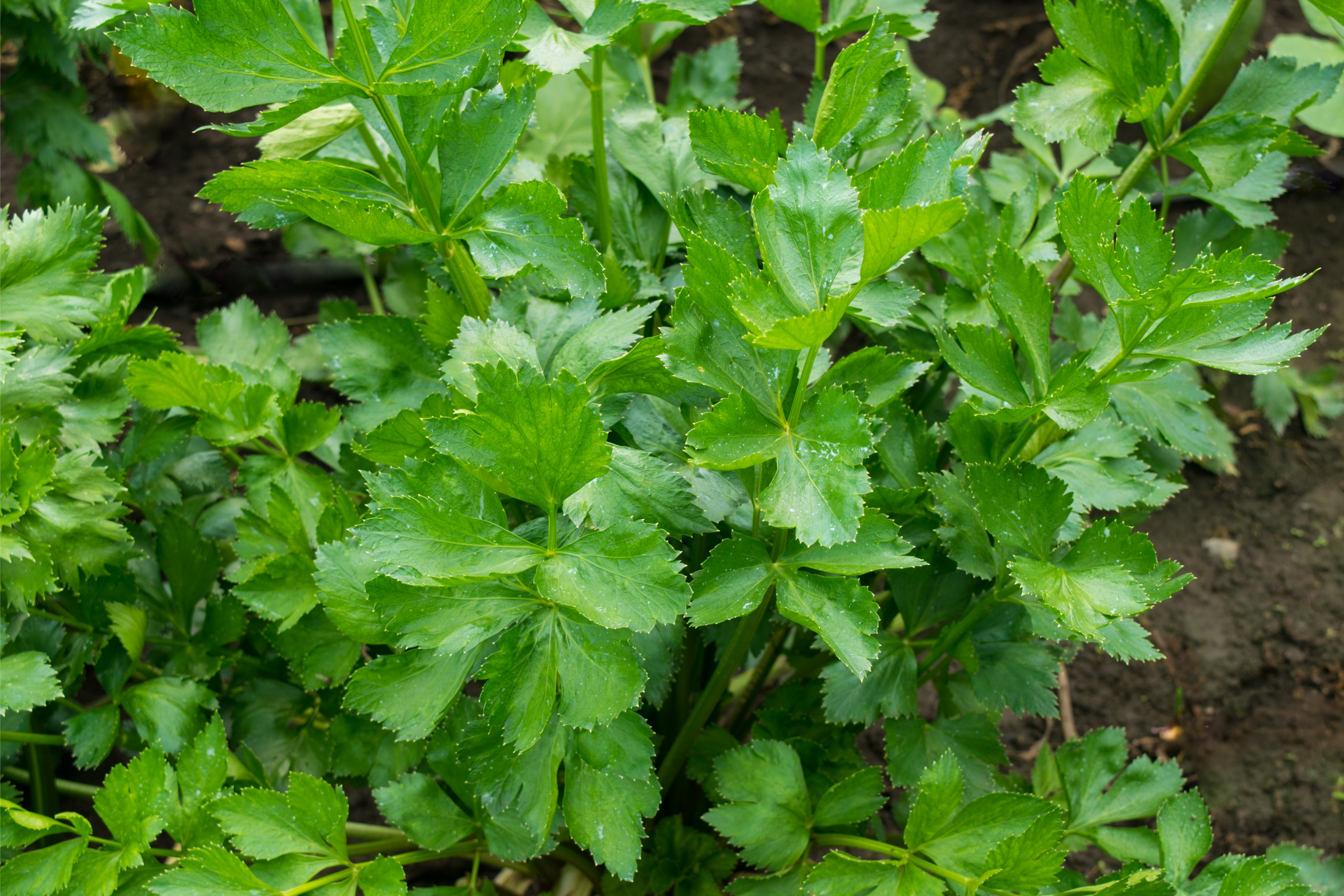Wild Celery
(Apium graveolens)

Description
Celery ( Synonym; Apium graveolens) is a marshland plant in the family Apiaceae that has been cultivated as a vegetable since antiquity. Celery has a long fibrous stalk tapering into leaves. Depending on location and cultivar, either its stalks, leaves or hypocotyl are eaten and used in cooking. Celery seed powder is used as a spice. Celery leaves are pinnate to bipinnate with rhombic leaflets 3–6 centimetres (1–2+1⁄2 inches) long and 2–4 cm (1–1+1⁄2 in) broad. The flowers are creamy-white, 2–3 mm (3⁄32–1⁄8 in) in diameter, and are produced in dense compound umbels. The seeds are broad ovoid to globose, 1.5–2 mm (1⁄16–5⁄64 in) long and wide. Modern cultivars have been selected for either solid petioles, leaf stalks, or a large hypocotyl. A celery stalk readily separates into "strings" which are bundles of angular collenchyma cells exterior to the vascular bundles. Wild celery, Apium graveolens var. graveolens, grows to 1 m (3 ft 3 in) tall. Celery is a biennial plant that occurs around the globe. It produces flowers and seeds only during its second year. The first cultivation is thought to have happened in the Mediterranean region, where the natural habitats were salty and wet, or marshy soils near the coast where celery grew in agropyro-rumicion-plant communities. North of the Alps, wild celery is found only in the foothill zone on soils with some salt content. It prefers moist or wet, nutrient rich, muddy soils. It cannot be found in Austria and is increasingly rare in Germany.
Taxonomic tree:







